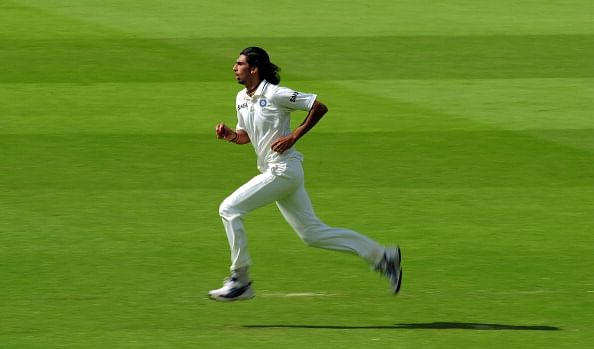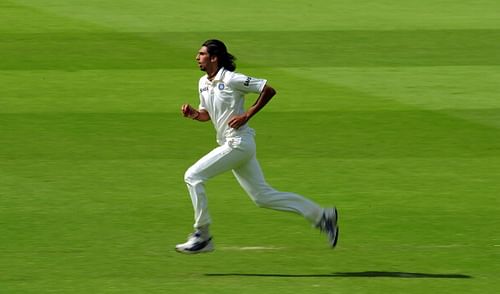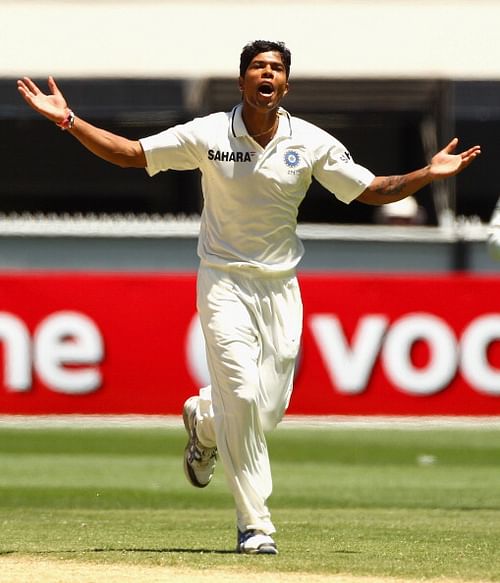
Fast bowling - Indian cricket's Achilles' heel

The majestic conclusion to the Border-Gavaskar Trophy 2013 shines in the backdrop of all that concerns Indian cricket at present. A delicious blend of individual brilliance and collective team effort from the Indians was more than enough to outscore the inept Australians in all departments of the game, except the toss! From prince to pauper, almost everyone in the Indian white made hay during this dazzling period of sunshine. India’s fortunes seemed to have turned to such an extent that even the under-performing assets like Shikhar Dhawan, Murali Vijay and Ishant Sharma have come to the fore once again.
The roller-coaster ride has been a sensational one for India, especially after enduring a string of muckraking experiences in the last two years. And all of a sudden, everything looks perfectly all right with the Indian team – loads of talent, a highly proficient leader who has supposedly held fort during a transition phase and no niggling issues between the seniors and juniors. In fact, all international cricket teams have become used to such tumultuous fortunes in contemporary cricket – top teams like Australia, England, South Africa and India have witnessed dizzying heights of success and embarrassing downfalls within very short periods of time.
The Indian team is undergoing a similar period at the zenith of their cricketing potential and ardent fans can only hope that this period of intensely zealous performances on the field is sustained for some time at least. The prime reason behind such fluctuations in the fortunes of international teams is the persistent neglect of the discrepancies and deficiencies that prevail in their dark underbellies. Not acknowledging those flaws often leads to teams wilting under alien conditions, their collapse being heavily aided by those neglected factors. Currently, the Indian team is also under the impact of one such deficiency that silently magnifies itself when India tours the foreign territories and remains under cover at home – the trauma of fast bowling!
There is no doubt about the role that the Indian spin quartet – Ashwin, Harbhajan, Ojha and Jadeja – played in the recently concluded Border-Gavaskar trophy. Australia’s woes against subcontinental spin came into the focus right from the day Parvez Rasool wrecked havoc in the Aussie camp with a 7-wicket haul in an innings for Indian Board President’s XI. In the matches that followed, the Indian team did perfectly well to manipulate Australia’s spin misery and usage of this strategy culminated in a massive and historic series victory for India.
Fast bowling, however, is still a secondary option for the skipper and there were no major achievements in this sector in the recently concluded series. Though Ishant Sharma and Bhuvneshwar Kumar played perfect foil to the dominant spinners, their exploits were never brought under any serious discussion.
Bhuvneshwar Kumar was a bright prospect at the start of the series and though he went wicketless in his debut Test, he justified his inclusion with quick bursts of wickets at important junctures in the Test series. Ishant Sharma, too, played a similar role in providing assistance to the spinners by putting in effective spells at times when the spinners looked jaded and tired. However, their achievements got downplayed amid the all-encompassing euphoria of the Aussie whitewash and this outlook towards the fast bowlers might prove to be a problem later on, when India tours South Africa in the near future. Let’s understand why.
(1) India cannot afford to persist solely with a spin attack in the foreign territories where the wickets shall be greener, bouncier and more helpful towards the fast bowlers. Throughout the recently concluded series against Australia, the Indian pacers bowled in small spells and the number of overs they shared between themselves stands no comparison to the monumental number of overs bowled by our spinners.
This may work against India in the alien, pace-friendly conditions when the Indian pacers shall be thrust with the lion’s share of bowling. This has been proved repeatedly in the last two years when India got hammered in England and Australia, mainly owing to the absence of fast bowlers who could exploit the given conditions properly.
(2) ‘Revenge’ has become the buzzword for Indian fans in the aftermath of the Border-Gavaskar Trophy. Tantrums are now being thrown at the Australians to mock at their glaring deficiencies in handling spin, to counter all the embarrassment that Indians had to face when they lost 4-0 in Australia last year. This mud-slinging exercise would however be of no avail when India’s deficiencies in fast bowling crop up again, during the tours in the recent future.
We have loads of batsmen to quash the challenges offered by the opposition, and our spinners can be deadly when conditions suit them; but we still lack a well trained reserve of fast bowlers who can pounce on the opportunities offered to them on the pace-friendly foreign turfs. Not much thought seems to have been put into this matter by the selection committee, going by their reckless attitude towards the selection of fast bowlers. There is no coordination, whatsoever, to be found in those selections – A decent fast bowler gets selected for a certain occasion, on the basis of his domestic performance, and is left to fend for himself – if he performs, he lives to fight another day and if he doesn’t, he is coldly pushed back into the dungeon of domestic cricket once again.
Parvinder Awana, Abhimanyu Mithun and Praveen Kumar are now exemplary characters to prove the theory. Ishant Sharma has been doling out erratic performances, half a decade after his international debut, and Ashok Dinda looks set to be branded an outcast from the team in the absence of favourable opportunities. Characters like Sreesanth and Irfan Pathan seem to be long forgotten names in the arena of Test cricket, and nowadays they only entertain us through reality shows, cheap endorsements and unwelcome controversies.
 (3) No new faces in the fast bowling department were introduced in the Indian team in the entire series. Even though Ashok Dinda was kept as a dummy bench-warmer for the entire series, the selectors never looked like keeping the team door ajar for him. And, what about the prospects of Parvinder Awana – someone who bowls his heart out in the domestic seasons and the IPL, gets a cursory nod from the selectors and enters the hallowed portals of the Indian dressing room for the first time in the last Test match against England at home in late 2012, but never managed to put a mark on the team in the absence of a place in the team, and subsequently got axed and sent back to the domestic fracas. One can, by now, safely assume that this prodigal fast bowler must have lost some good amount of pace and teeth from his bowling.
(3) No new faces in the fast bowling department were introduced in the Indian team in the entire series. Even though Ashok Dinda was kept as a dummy bench-warmer for the entire series, the selectors never looked like keeping the team door ajar for him. And, what about the prospects of Parvinder Awana – someone who bowls his heart out in the domestic seasons and the IPL, gets a cursory nod from the selectors and enters the hallowed portals of the Indian dressing room for the first time in the last Test match against England at home in late 2012, but never managed to put a mark on the team in the absence of a place in the team, and subsequently got axed and sent back to the domestic fracas. One can, by now, safely assume that this prodigal fast bowler must have lost some good amount of pace and teeth from his bowling.
Umesh Yadav, like any other bowler in India who bowls ‘fast’ has faded into oblivion owing to a string of injuries. He shall , presumably, henceforth be seen featuring only in the IPL and the ‘unimportant’ domestic matches. The gradual dwindling of our ‘fast’ bowling resources, plainly by virtue of neglect and misuse, is alarming indeed. And in spite of such peril mocking us in the face, the selectors chose to stay calm with just the two fast bowlers throughout the series against Australia . That is outrageously baffling!
The need to perform a much needed reconnaissance of our fast bowling resources shall arrive soon, and looking at the recent trend in international cricket, India might well be in for some serious embarrassment in South Africa later this year, if no surgeries are performed on the ailments that are potentially haemorrhaging to our prospects in the future. The cosmetic changes need to be dismantled and some serious mobilisation of resources in the fast bowling department needs to be done if India doesn’t want to face yet another whitewash in South Africa after the euphoria of whitewashing the Aussies. That whitewash, though, may be performed on the Indians, rather than by them!